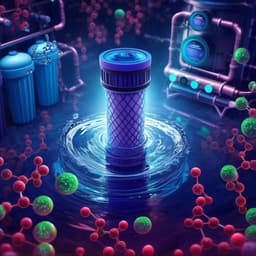
Environmental Studies and Forestry
Insights to estimate exposure to regulated and non-regulated disinfection by-products in drinking water
P. E. Redondo-hasselerharm, D. Cserbik, et al.
This study conducted by Paula E. Redondo-Hasselerharm and colleagues uncovers significant human exposure to disinfection by-products in drinking water. Through thorough analysis of tap, bottled, and filtered water, as well as urine samples, the research reveals high levels of DBPs in tap water and a notable link between urine concentrations and drinking habits. Explore these groundbreaking insights into public health risks associated with water consumption.
~3 min • Beginner • English
Related Publications
Explore these studies to deepen your understanding of the subject.







